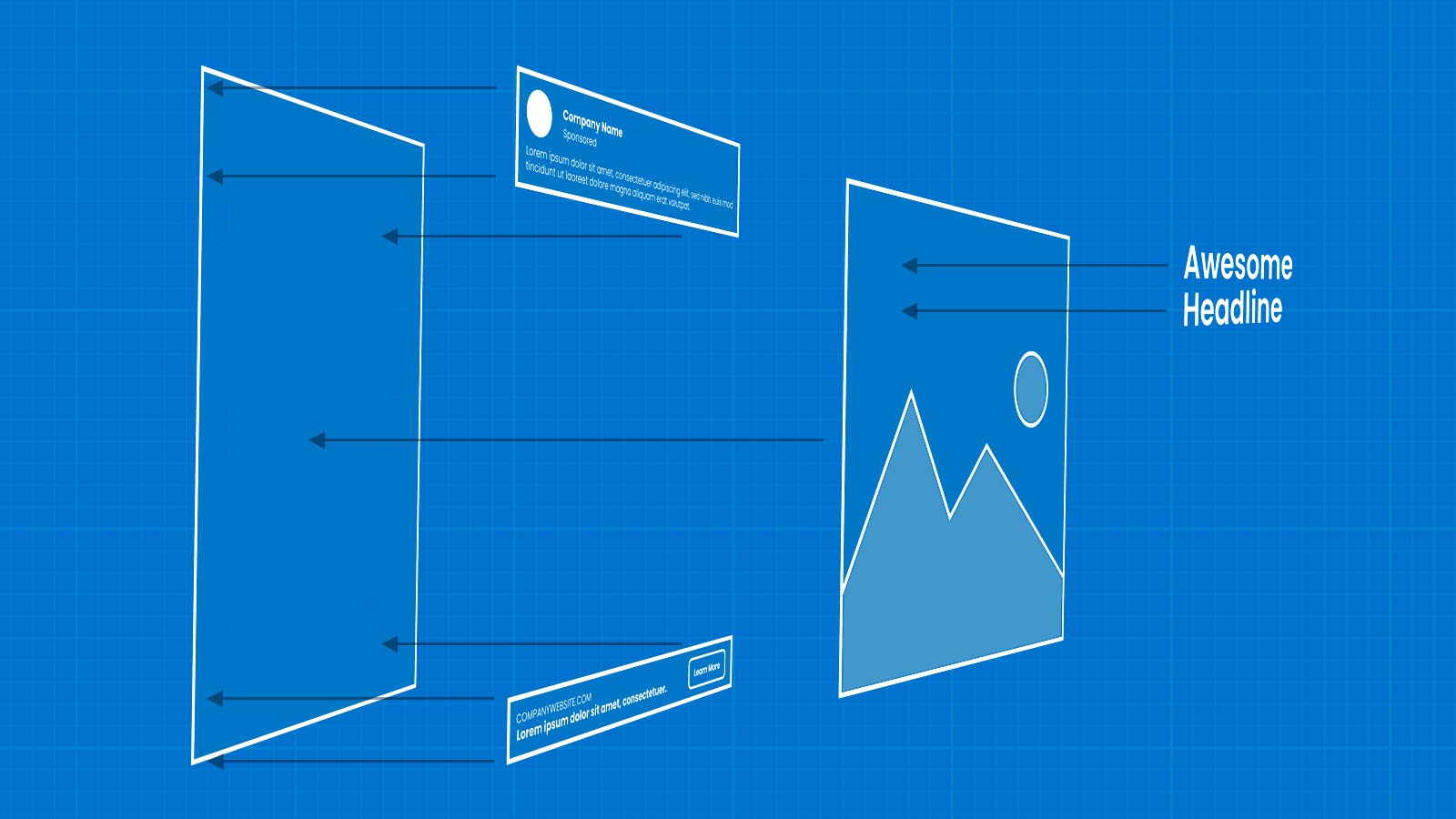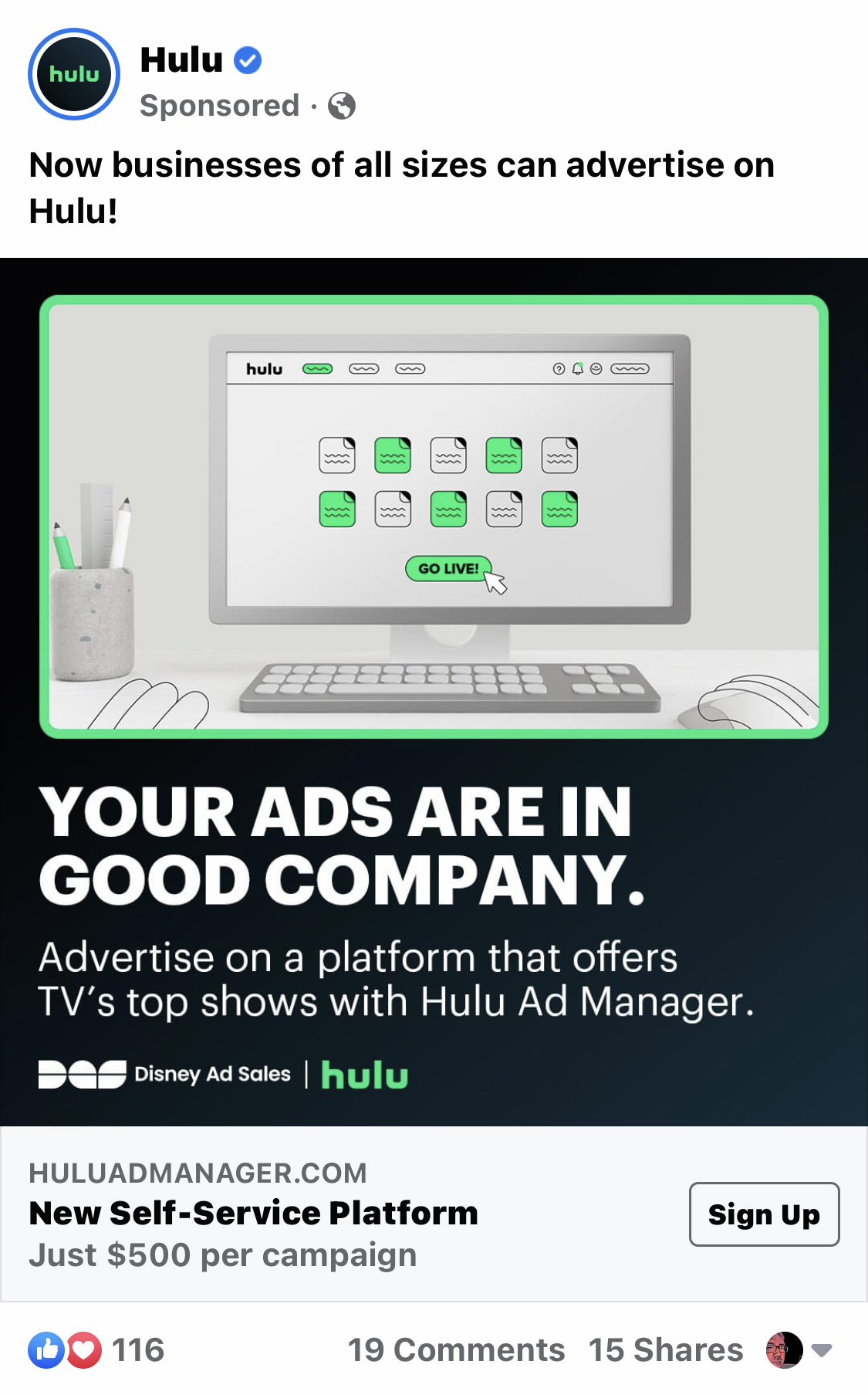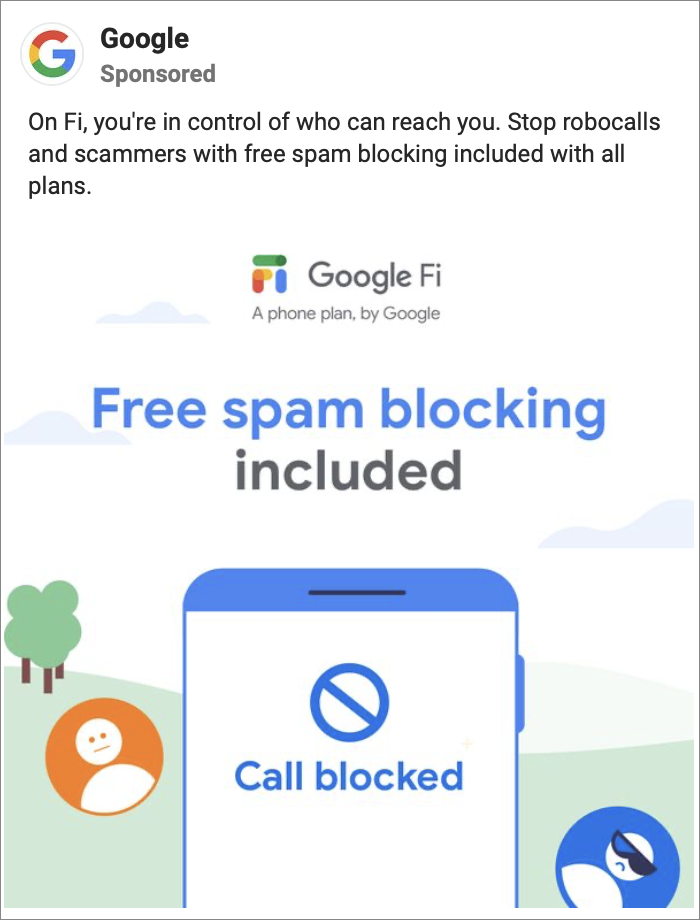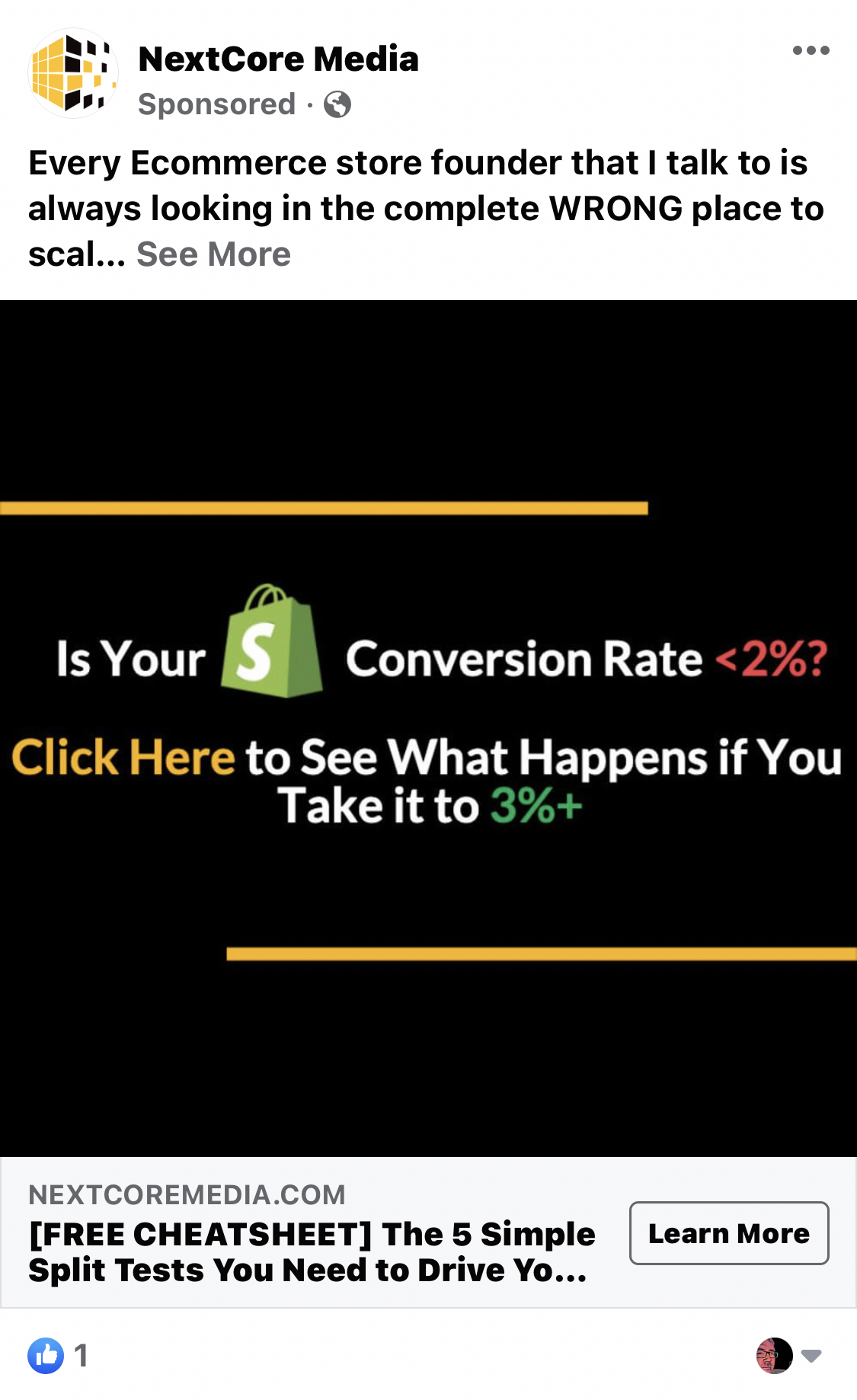
The Perfect Facebook Image Ad
Ever wonder why some of your image ads on Facebook kill it and others flop? Today, we’re going to see how to create the perfect Facebook image ad.
How?
By digging into Facebook’s documentation, releases, experimentation, and what others have done. Remember Facebook’s ad network also runs Instagram, so this information works for Instagram as well.
On Facebook’s Q1 earnings call the CFO, Dave Wehner, stated the following:
In Q1, the total number of ad impressions served across our services increased 12% and the average price per ad increased 30%. Impression growth was driven by both Instagram and Facebook. The increase in average price per ad was driven primarily by lapping depressed pricing levels from one year ago as well as strong advertiser demand.
As an advertiser, that means more competition and higher costs. This article will show you how to get the most out of your Facebook image ads.
How Does Facebook Determine Which Ads To Show Users?
There are 195 million daily active Facebook users in the US and Canada. Facebook generated $25.4 BILLION in ad revenue for Q1 2021. There are more than 10 million activeadvertisers according to Sheryl Sandberg on Facebook’s 2020 Q3 earnings call. That’s a lot of competition to get an ad displayed to someone.
Facebook recently explained how it uses machine learning to deliver personalized ads to people. There are two main factors: audience targeting and ad auction results. This post won’t go into the details of how this all works, rather how we can use this information to create better image ads.
Audience Targeting Selected By The Advertiser
The first criteria is straightforward. As an advertiser, you select whom you would like to see your ad. We’ve written how you can find your audience on the cheap using Facebook ads that discusses different demographics and interests. You can specify you want your ads to reach women 18 – 45 with a college degree and interests in cooking for example. What you define is the audience piece of the equation on how Facebook delivers ads.
Results Of The Ad Auction
This is a bit of a misnomer because it implies that price is the determining factor for ad delivery.
Price isn’t the determining factor.
Instead, Facebook uses a complex calculation that includes bid price to determine which ads to show. Facebook creates a total value score to determine ad delivery.
Facebook uses the total value score — a combination of advertiser value and ad quality to determine delivery.
Confused?
It’s okay, we’ll do an article in the future digging into these things. For now, just know that your advertiser value is better if people interact with your ad. Facebook estimates the action rate (people clicking, liking, commenting, etc. on your ad), so it isn’t totally in your control.
We’ll focus on the second part, the ad quality score. Let’s dig in.
Facebook’s Ad Quality Impact On Ad Delivery
As an advertiser, your goal is to get the best return on ad spend. This often feels like a futile battle where results can seem random. Time to dig deeper into how ad quality impacts your results.
First, your ad quality is rather complex. You want to make sure you stay within Facebook’s advertising policies. Even that has many gray areas we won’t dive into here.
Next, is the quality ranking. This is broken down into three areas: quality (real helpful I know), engagement, and conversion. To improve our image ads, we aren’t going to focus on engagement and conversion here. Instead we’ll dig into quality and the last piece of the puzzle, low-quality attributes.
Quality ranking is important for ad delivery and performance. There are 5 categories:
- Above average – your ad’s perceived quality is better than 65% of competing ads.
- Average – your ad’s perceived quality is inline with most competing ads.
- Below average (Bottom 35%) – your ad’s perceived quality is worse than 65% of competing ads.
- Below average (Bottom 20%) – your ad’s perceived quality is worse than 80% of competing ads.
- Below average (Bottom 10%) – your ad’s perceived quality is worse than 90% of competing ads.
Facebook will show what it perceives to be higher quality ads.
Deeper into the Facebook ad delivery rabbit hole we go.
What Makes A Quality Ad?
Facebook measures quality through various signals. Feedback from users is an important signal. If people hide your ad that indicates to Facebook that the ad is of low quality or isn’t relevant. Remember that $25 billion in ad revenue? Facebook needs ads to be successful to make money. If your ad is offensive, not relevant, not engaging, and gets actively hidden you can bet Facebook isn’t going to deliver that ad to too many people.
Your ad AND landing page should be relevant and useful to your target. audience. Don’t create an ad to sell water and send users to a landing page promoting bandages.
Put yourself in Facebook’s shoes. Bad ads can cost revenue. Trying to trick or game the system to manipulate your audience is the definition of a low quality ad.
Facebook provides some guidance here. There are tips to make your ads resonate, best practices for cost-effective ad creative, and best practices to make your ad more engaging.
Creating The Perfect Image Ad
On desktop you’ve got 2 – 3 seconds to make an impact. On mobile you’ve got 0.4 seconds. That’s according to cognitive research from the Mobile Marketing Association. People scan social media for stuff that interests them. People can make a decision on what they want to engage with in less than 1/2 a second.
A daunting task to make an impression that quickly.
Here are some tips that can help in creating Facebook image ads.
Less Text
Let your image do the talking. People scan Facebook ads, so they won’t see all the copy you’ve written. Facebook recommends to keep text to less than 20% of the total image. They recommend to use smaller font to keep that ratio.
Don’t.
Do you know what has a lot of text in smaller font sizes? Not anything you want to read. It is an immediate turn-off when your ad looks like it is hiding legal terms in small fonts.
In practice, you are limited to 5 – 6 words in a large enough font to look great. Distill your copy to your most important points. It is better to capture attention first.
Your ads will not get rejected if you exceed 20% text on a Facebook image ad. After the 20% rule for Facebook image ads were removed, there were delivery warnings based on how much text was on an image. This was called Image Text Ratings.
The levels for Image Text Ratings were OK, Low, Medium, and High. Everything other than OK would warn about your ad’s reach being lower. This has also been removed. That doesn’t mean you’re free to fill your image ad with text. Look at the 5 categories for the quality rankings above in this article. More text will probably lower your score there.
More text also looks unprofessional. It means you are either trying to sell multiple things at once or don’t have enough grasp to explain what you do in a concise way.
Removing text takes discipline. We’ve run ads with far too much text. Are there exceptions? Possibly. Run experiments on specific ads to see what works and what doesn’t.
Below you’ll find what image ads look like with 20% and 35% text with different font sizes. This helps to visualize how much text you really have.

Facebook Standard Ad (1080 x 1080)
20% Text | Font Size 112pt
At this size, the text is easy to read and it doesn’t take up too much of the overall image.

Facebook Standard Ad (1080 x 1080)
20% Text | Font Size 72pt
The text is still legible, but looks a bit cluttered.

Facebook Standard Ad (1080 x 1080)
20% Text | Font Size 48pt
Begins to look like a wall of text. You can break it up, but still somewhat small where it won’t pull in a viewer.

Facebook Standard Ad (1080 x 1080)
32% Text | Font Size 112pt
This size looks decent, but your image isn’t going to pop as much. Could work with high contrast.
There is a Hulu ad that works pretty well mixing font sizes and uses about 33% text. Notice the use of high contrast which makes things easier to read and makes the ad pop.


Facebook Standard Ad (1080 x 1080)
32% Text | Font Size 72pt
At this font size, it simply is too much text to expect someone to read.

Facebook Standard Ad (1080 x 1080)
32% Text | Font Size 48pt
The great American novel in ad form. Way too much text.
Ad Examples Following Less Text
These ad don’t overuse text and showcase the product or service in the image.


All Text Ads
There are always exceptions to every rule. High contrast designed text ads can perform well. The emphasis is on the text and the contrast helps the ad stand out. In a sea of images, this can be something that stops the user from scrolling.

Quality Image At The Right Resolution
You need the user to stop and engage with your ad. Having blurry images or out of focus isn’t going to help. Check Hubspot’s ad spec and sizes guide for image resolution.
Scannable Meaning
Remember, on mobile you have less than half a second to make an impression. The image you choose should be memorable and related to what you are trying to accomplish. Pictures of cute dogs will perform well, but not generate a single conversion for your hot sauce.
Crop your image to highlight what is most important. A group of people eating could be interpreted to be about a business meeting. If you’re a restaurant, you’ll want to focus on the food and not the people.
High Contrast
You want your Facebook image ad to pop. Using contrast is a great way to do that.
Composition And Position
The composition of an image can be used to draw people in. Using the Golden Ratio can help you create images that perform better. Art Ignition has all the information you need in their article on how to use the golden ratio.
The Main Rule For Creating A Facebook Image Ad
Your ad shouldn’t be out of place in the feed for it to perform well. Your ad should flow naturally within the feed while standing out. SketchDeck ran some tests to bust some ad myths. They found that no text on a Facebook image ad performed best.
You must balance between different metrics. You should be running ads that are profitable for your business. So an unrelated, but interesting image may get clicks. Your landing page may not convert as well.
Conclusion
There is no guaranteed success with Facebook ads. You can increase the likelihood of success by following the steps in this article. It’s okay to experiment as tastes change. Audiences can also differ on what makes them engage. The more you understand how Facebook delivers its ads, the more you can use the knowledge to get better results.
Be critical in your evaluations of both your great ads and your flops. Understanding how your ads performed helps to understand your audience and how Facebook works. If you need someone to help, reach out. We’d love to help.